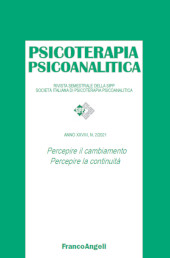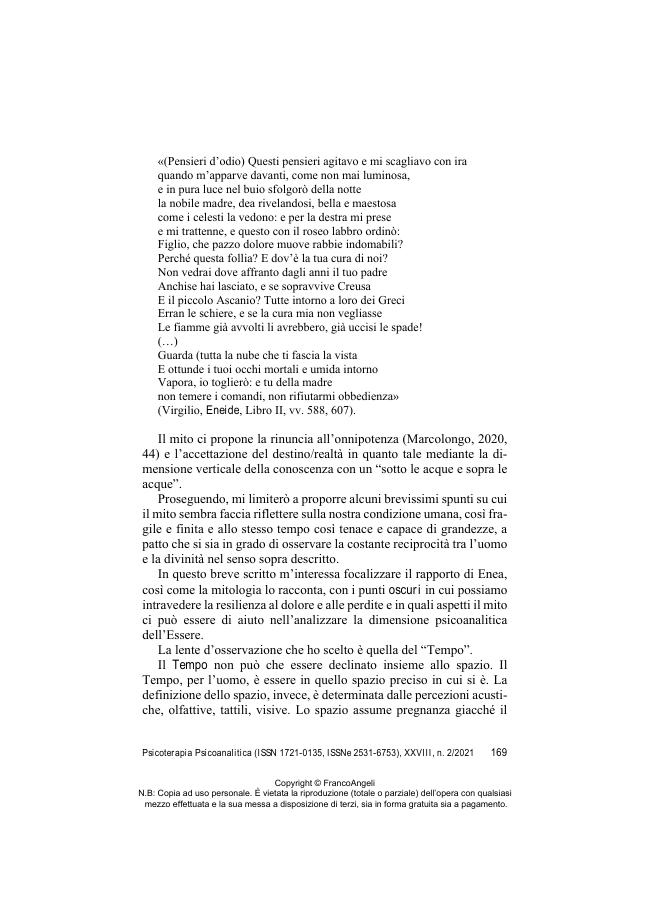Enea : un mito contemporaneo : la capacità di essere se stessi nella continuità del trauma
164-174 p.
L'autrice in questo articolo utilizza il Mito di Enea per descrivere la continuità dell'Essere nella discontinuità dell'Esistenza. Ella utilizza il Mito come suggerisce Bion quale struttura psicologica narrativa che consente di accedere all'Inconscio similmente al sogno. I traumi che Enea vive interrompono la linearità del tempo vissuto ma egli ha la capacità di resistere e di rialzarsi. Tale capacità si fonda sull'interiorizzazione di un oggetto materno che abbia svolto la funzione di segnalare i vissuti di odio e di aver dato indicazioni per la trasformazione dei sentimenti d'ira e di rabbia, non nell'agito ma nella capacità di superare l'odio stesso. Enea rappresenta colui che è in grado di 'soffrire' il dolore e di trasformarlo in quanto la sua vita è improntata nella dimensione della fiducia e del lutto, elementi intrinseci che l'autrice ritiene si possano rintracciare nello studio psicoanalitico che i Miti suggeriscono come espresso nella teoresi bioniana.
L'autrice utilizza la funzione del 'tempo' per descrivere questi passaggi e la percezione di sé come unitario nei tempi del passato, presente e futuro senza che i suoi pensieri sfocino nella follia. [Testo dell'editore].
The author in this article uses the Myth of Aeneas to describe the continuity of Being in the discontinuity of Existence. She uses Myth as Bion suggests as a narrative psychological structure that allows access to the Unconscious similarly to the dream. The traumas that Aeneas experiences interrupt the linearity of the lived time but he has the ability to resist and get up. This ability is based on the internalization of a maternal object that has performed the function of pointing out the experiences of hatred and of having given clues for the transformation of anger and rage, not in acting out but in the ability to overcome the hate himself.
Aeneas represents the one who is able to 'suffer' pain and transform it as his life is marked by the dimension of trust and mourning, intrinsic elements that the author believes can be traced in the psychoanalytic study that the Myths suggest as expressed in the Bionian theory. The author uses the 'time' function to describe these transitions and the perception of oneself as unitary in the times of the past, present and future without his thoughts leading to madness. [Publisher's text].
Fait partie de
Psicoterapia psicoanalitica : 2, 2021-
Articles du même numéro (disponibles individuellement)
-
Informations
Code DOI : 10.3280/PSP2021-002011
ISSN: 2531-6753
KEYWORDS
- mito, odio, trauma, dolore, lutto, trasformazioni, tempo
- myth, hatred, trauma, pain, mourning, transformations, time



